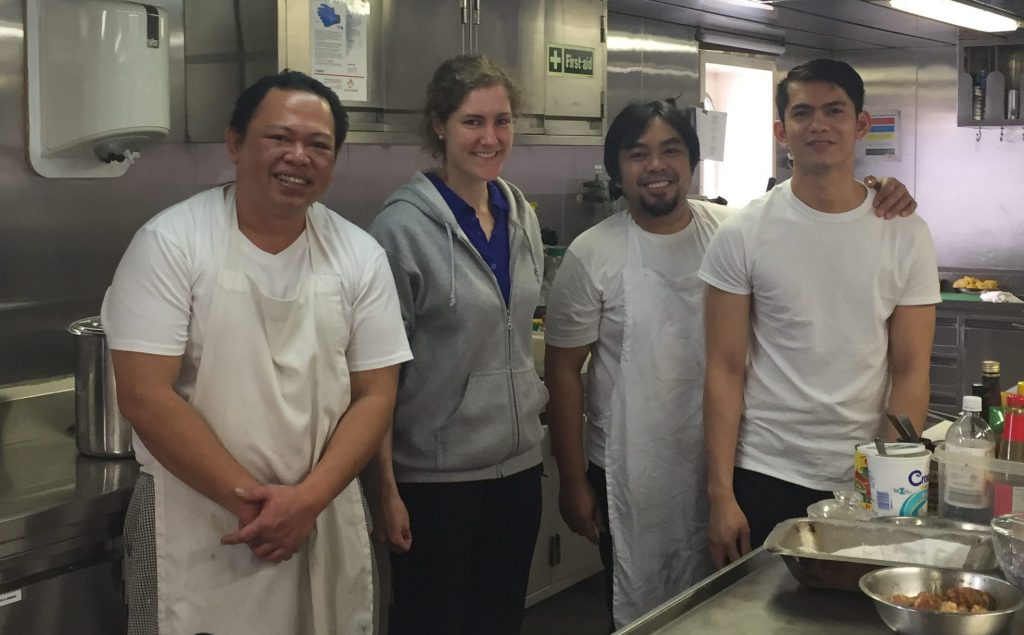November 8, 2016
“A rare opportunity to sail aboard a working vessel and develop some of that ‘gut feeling’ for how a ship really works”
By: Karen Campbell
 Karen with the galley crew onboard the Australian Spirit |
November 8, 2016
 Karen with the galley crew onboard the Australian Spirit |